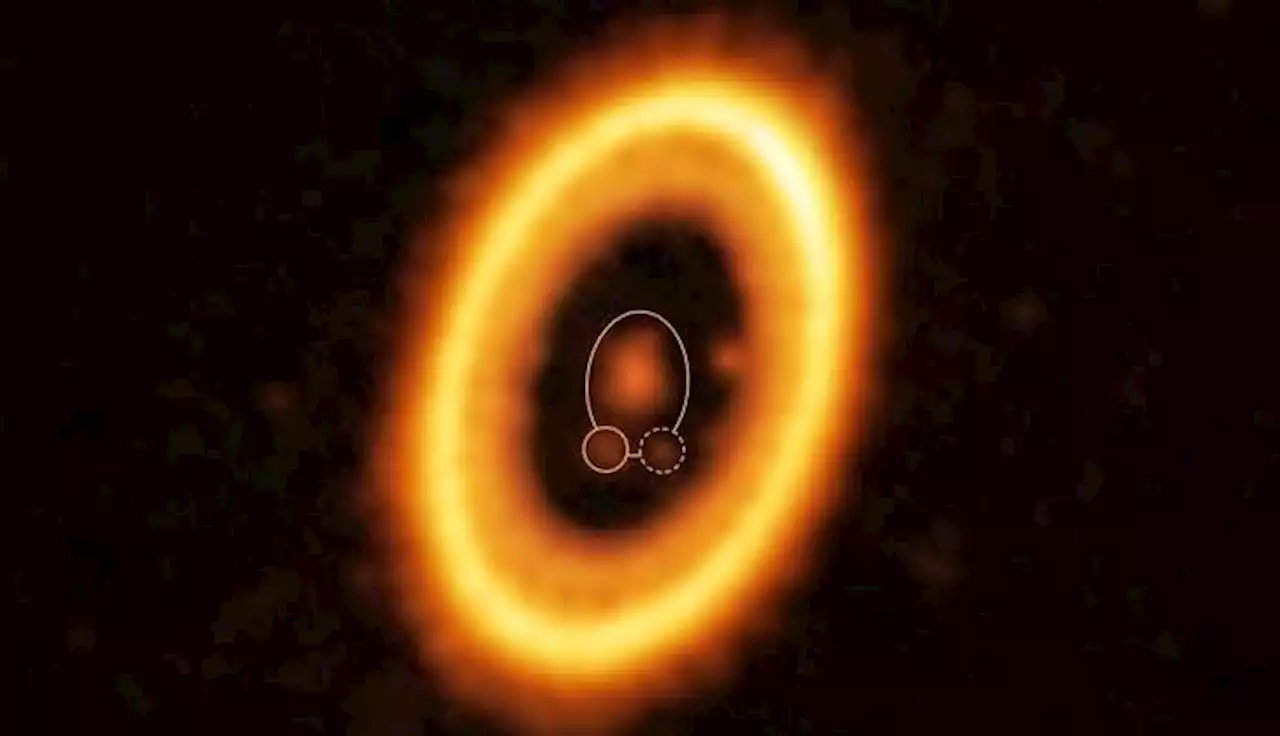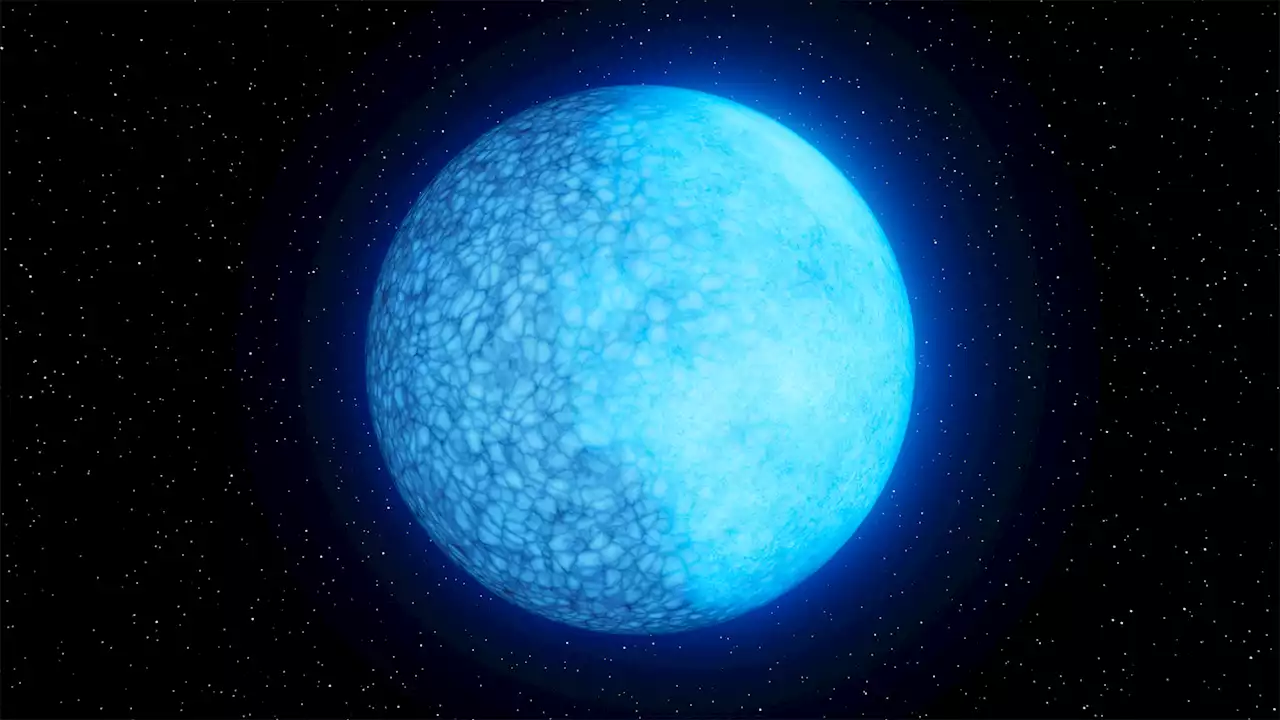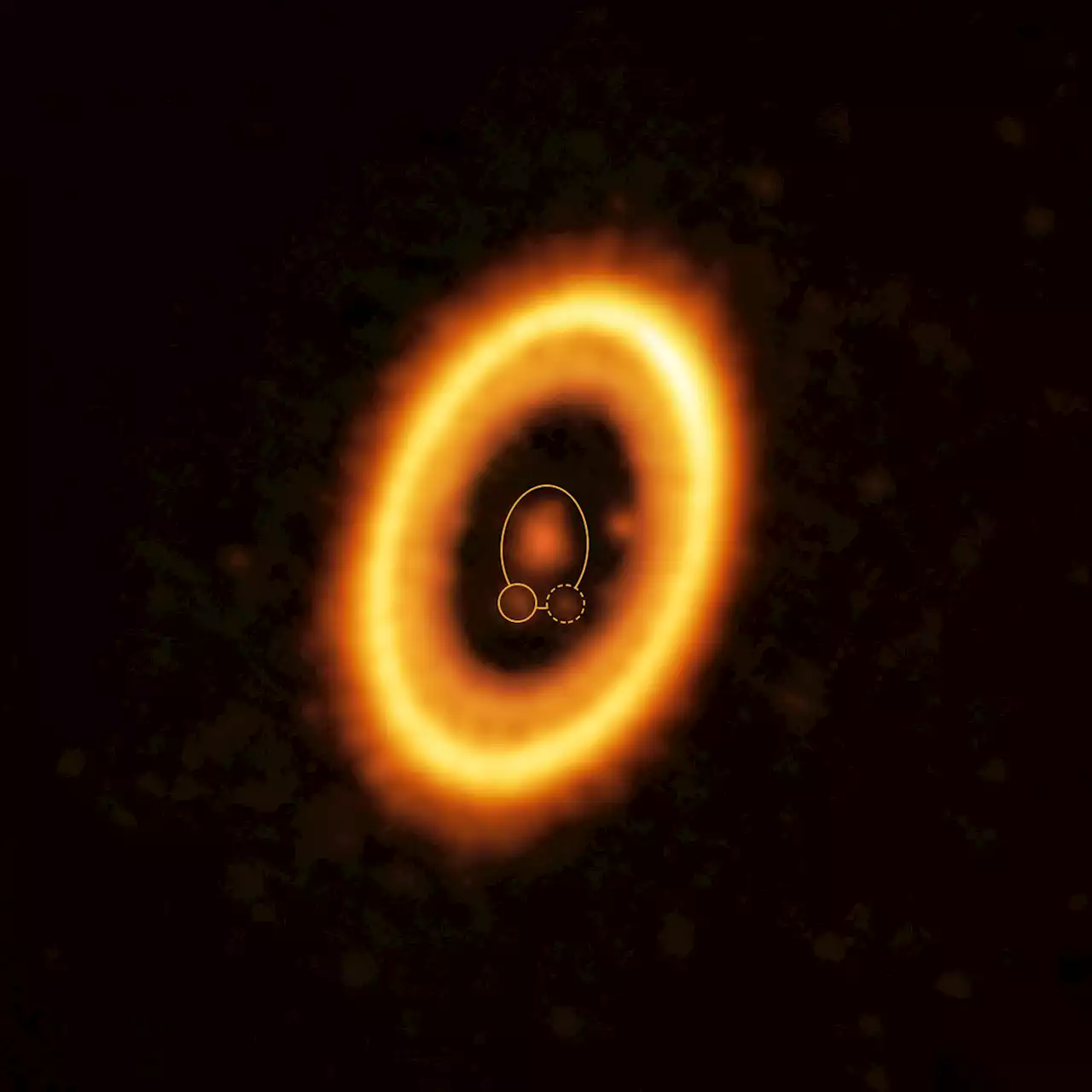We may have the first concrete evidence of 'mind-blowing' Trojan exoplanets.
"Two decades ago, it was predicted in theory that pairs of planets of similar mass may share the same orbit around their star, the so-called Trojan or co-orbital planets. For the first time, we have found evidence in favor of that idea," explained Olga Balsalobre-Ruza, a student at the Centre for Astrobiology in Madrid, Spain, who led the paper.
"Exotrojans [Trojan planets outside the Solar System] have so far been like unicorns: they are allowed to exist by theory, but no one has ever detected them," explained co-author Jorge Lillo-Box, a senior researcher at the Centre for Astrobiology.The team behind the new paper has presented their discovery using ALMA, which they argue provides the strongest observational evidence to date that Trojan planets exist.
In this ALMA image, PD70b is highlighted by a yellow circle and the cloud of debris by a dotted yellow circle.The team found that the debris cloud has a mass of roughly two times that of our Moon. They believe it could point to an existing Trojan world in this system or at least one in the process of forming.
Argentina Últimas Noticias, Argentina Titulares
Similar News:También puedes leer noticias similares a ésta que hemos recopilado de otras fuentes de noticias.
 Astronomers discover mysterious 'Trojan' planets that share the same orbitA distant Jupiter-size planet could have the shattered remains of a smaller sibling in its tow.
Astronomers discover mysterious 'Trojan' planets that share the same orbitA distant Jupiter-size planet could have the shattered remains of a smaller sibling in its tow.
Leer más »
 In a world first, astronomers discover 'mind-blowing' two-faced starOne side of a newly-discovered white dwarf star, dubbed Janus after the two-faced Roman god of transition, is composed of helium and the other of hydrogen.
In a world first, astronomers discover 'mind-blowing' two-faced starOne side of a newly-discovered white dwarf star, dubbed Janus after the two-faced Roman god of transition, is composed of helium and the other of hydrogen.
Leer más »
 1st evidence found for ‘Trojan planet’ worlds occupying same orbit'Co-orbital planets are 'fossils' of the planetary formation processes; at present, they are like unicorns.'
1st evidence found for ‘Trojan planet’ worlds occupying same orbit'Co-orbital planets are 'fossils' of the planetary formation processes; at present, they are like unicorns.'
Leer más »
 Rare ‘Trojan’ world may share the same orbit as another planet | CNNAstronomers spotted a possible “sibling” planet that shares the orbit of another exoplanet in a system located 370 light-years away.
Rare ‘Trojan’ world may share the same orbit as another planet | CNNAstronomers spotted a possible “sibling” planet that shares the orbit of another exoplanet in a system located 370 light-years away.
Leer más »
 Planets might have 'siblings,' astronomers findA cloud of debris is seemingly orbiting around a star in the same path as another planet, in the first evidence of two exoplanets sharing an orbit.
Planets might have 'siblings,' astronomers findA cloud of debris is seemingly orbiting around a star in the same path as another planet, in the first evidence of two exoplanets sharing an orbit.
Leer más »
 How astronomers traced a puzzling signal to a lunchtime mistakeThe unusual radio wave turned out to have a rather mundane Earthly origin. But the puzzle wasn't easy to solve.
How astronomers traced a puzzling signal to a lunchtime mistakeThe unusual radio wave turned out to have a rather mundane Earthly origin. But the puzzle wasn't easy to solve.
Leer más »
